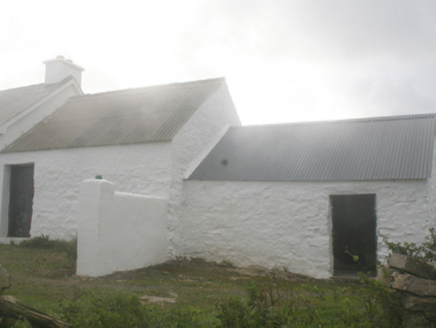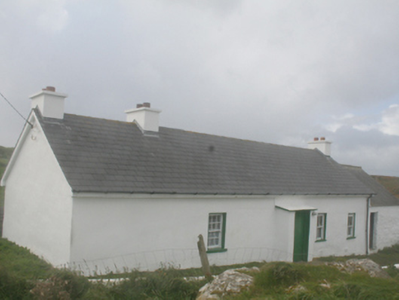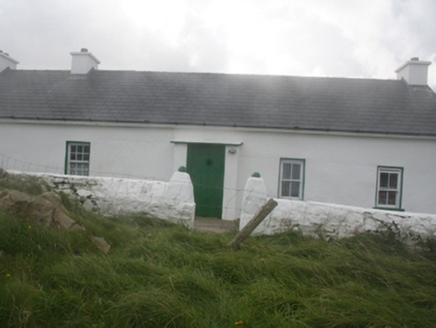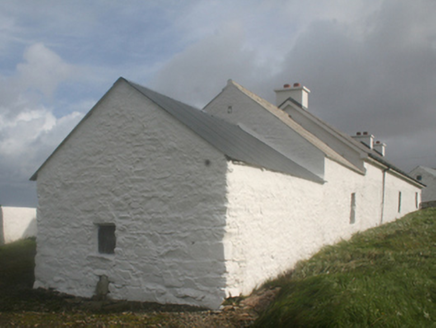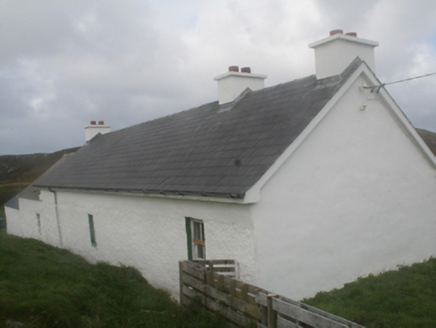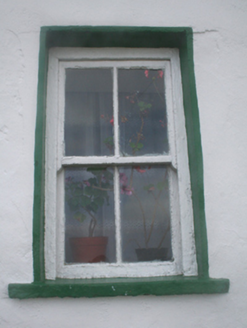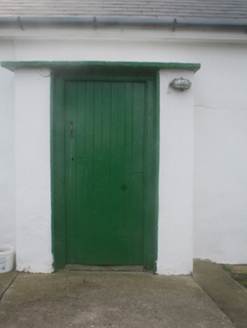Survey Data
Reg No
40900112
Rating
Regional
Categories of Special Interest
Architectural
Original Use
House
In Use As
House
Date
1800 - 1840
Coordinates
239639, 459113
Date Recorded
02/10/2008
Date Updated
--/--/--
Description
Detached four-bay single-storey vernacular house, built c. 1820 and extended c. 1860, having windbreak porch to front (east), and two single-bay single-storey outbuildings attached to the north gable end. Pitched artificial slate roof with three limewashed rendered chimneystacks, and with replacement rainwater goods. Formerly thatched. Corrugated-metal roof to attached outbuildings. Cement rendered rubble stone walls to dwelling, limewashed rubble stone walls to outbuildings. Irregularly-spaced square-headed window openings with stone sills, smooth rendered reveals, and with six-over-six and four-over-four pane horned timber sliding sash windows. Square-headed door opening to windbreak porch having battened timber door. Square-headed doorways to outbuildings having battened timber doors. Set in own grounds bounded by limewashed rubble stone walls, gate piers with decorative concrete ball finials over. Detached outbuilding to south having pitched corrugated-metal roof, rubble stone walls with concrete block extension to south, and square-headed doorways with battened timber doors; detached single-bay single-storey outbuilding to the south-west having mono-pitched corrugated-metal roof, limewashed rubble stone walls, and square-headed doorway.
Appraisal
Although recently altered, this appealing and relatively intact example of a vernacular house retains its early form and character, and is an appealing feature in the scenic rural landscape adjacent to the south of Malin Head to the extreme north of Inishowen. Its integrity is enhanced by the retention of some of its salient fabric including irregular-spaced and sized timber sliding sash windows, which help give this building a pleasing vernacular appearance. Modest in scale, it exhibits the simple and functional form of vernacular building in Ireland. It retains some characteristic features of the vernacular tradition to the area, including a windbreak porch, and a largely blank rear elevation. The form of this building suggests it was originally\formerly thatched, recently reroofed. The form of this building, having chimneystacks to the gable ends and a central doorway to the original building, suggests that this building is of the ‘direct entry’ type that is characteristic of the vernacular tradition in north-west Ireland. The location of the chimneystacks also suggests that this building was extended along its length to the south some stage. The attached rubble stone outbuildings to site add considerably to the context and setting, and help to create a long low vernacular composition of some rustic and visual appeal. This house represents a relatively intact surviving example of a once ubiquitous building type in the rural Irish countryside, and is an addition to the vernacular heritage of County Donegal.
